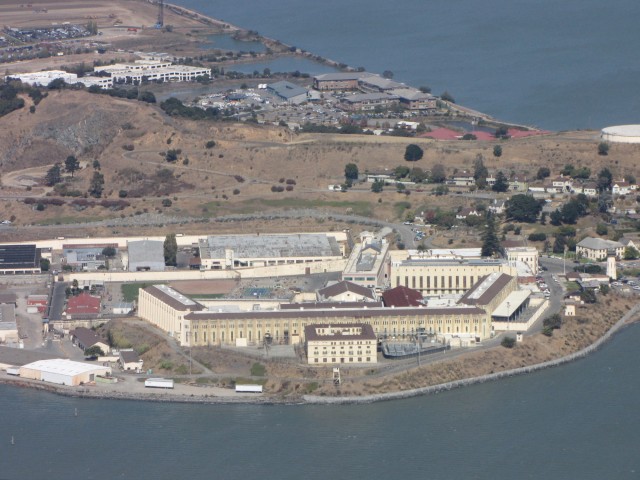He also said that the deaths of the two death row inmates last week were attributed to suspected drug overdoses, pending results from the Marin County Coroner’s office.
Last Monday, Herminio Serna, a 53-year-old gang member sentenced to death for multiple murders in San Jose, was found unresponsive in his cell.
The day after, guards found Joseph Perez, a 47-year-old inmate sentenced to death for killing a woman who was stabbed and strangled during a robbery of her Lafayette home in 1998, also unresponsive.
Autopsy reports on their deaths are expected next month, according to Marin County Chief Deputy Coroner Roger Fielding.
State prison officials have not officially linked the two deaths with illegal drug use, but a statement from the California Department of Corrections and Rehabilitation said health care staff at San Quentin are conducting outreach and education for inmates on the dangers of drug abuse.
Last May, KQED reported that four inmates at San Quentin had died from drug overdoses since the beginning of 2017. Of those four, two involved fentanyl, according to the Marin County Sheriff’s Office.
Willis said the recent rise of cases at San Quentin is part of a cyclical trend.
“This is typically the pattern: We see a bad batch or very high-potency batch of fentanyl or heroin come into the community, and we’ll see spikes,” he said.
The cases are reviving attention on efforts by the CDCR to reduce the flow of illegal drugs into the prison system and to treat inmates battling addiction.
“It’s absolutely unacceptable to be holding people who are in effect our wards of the state, to have them dying on our watch for use of illegal substances,” said state Sen. Nancy Skinner, D-Berkeley, who chairs the Senate’s Public Safety Committee and has called for corrections officials to do a better job of preventing illegal opioid drugs from entering the prison system.
Last April, a series of suspected overdoses at Mule Creek State Prison in Amador County killed one inmate and sickened 12 others. State tests determined that fentanyl was the prime suspect in those cases.
The following month, Gov. Jerry Brown’s administration unveiled a new strategy to reduce the amount of illegal drugs in state prisons. The governor’s budget included a $13.8 million proposal to search everyone who enters and exits the California Substance Abuse Treatment Facility and State Prison at Corcoran in Kings County.
“Drugs do find their way into the state’s 35 institutions,” CDCR spokeswoman Terry Thornton said. “There’s no tolerance for this. It really undermines safety.”
In 2016, 29 inmates died of drug overdoses, prison officials have said. Last year, 40 died in such cases, according to analysis of prisoner deaths by the California Correctional Health Care Services.
So far this year, there have been 35 confirmed drug overdose deaths, according to Thornton.
Illegal drugs come into the state prison system through CDCR employees and visitors. In some cases they are thrown over prison fences and are dropped from drones.
Don Specter, executive director of the Prison Law Office, said overdoses in the prison system are a major problem.
“It’s as serious, if not more serious, than in the community,” Specter said.
The governor’s plan also includes $3.6 million for an addiction treatment plan.
Inmate advocates like Specter have been pushing for more help for prisoners battling addiction.
“There’s very little treatment for what is a gigantic group of people who have substances abuse problems,” Specter said. “The state of California has only recently begun… to ramp up drug treatment in the prisons.”
Health officials and lawmakers have pressured state prison officials to use treatment medications like buprenorphine to help struggling inmates.
“We just need to make sure to build systems to get those treatments into our jails and prisons,” Willis said.
“Locking people away with opioid addiction without addressing the root cause, we haven’t made a lot of progress in that person’s life if we don’t really take advantage of that opportunity to treat them,” Willis said.
In October, Clark Kelso, the federal official who controls medical care at the state’s prisons, announced a plan to spend $252 million a year to provide medication aimed at reducing fatal drug overdoses.
Kelso’s plan calls for the state to provide drug treatment to 13,000 inmates to reduce craving while weening them off opioids.
The Associated Press contributed reporting to this story.

